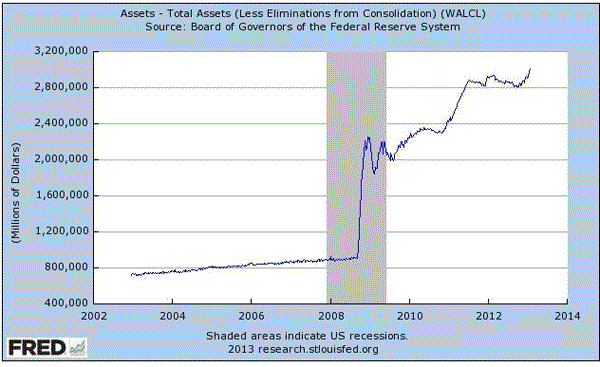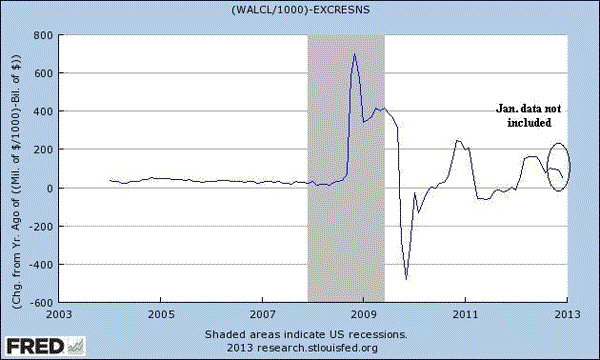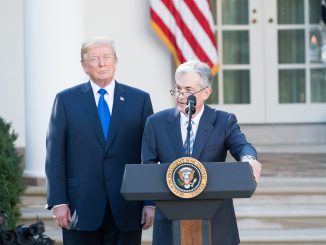The Fed’s balance sheet just topped $3 trillion for the first time ever according to the Wall Street Journal,
The U.S. Federal Reserve‘s balance sheet topped $3 trillion for the first time as the central bank continued with its easy-money policy.
The Fed’s asset holdings in the week ended Jan. 23 increased to $3.013 trillion from $2.965 trillion a week earlier, the central bank said in a weekly report released Thursday.
The Fed’s holdings of U.S. Treasury securities rose to $1.697 trillion Wednesday from $1.689 trillion a week earlier. The central bank’s holdings of mortgage-backed securities rose to $983.17 billion, from $947.61 billion a week ago.

How much QE is leaking into the economy?
We have posted several pieces (see here and here) on how the expansion of the Fed’s balance sheet is financed by reserve creation, which are held by depository institutions in the form of excess reserves and not circulating in the economy. In the chart below we try and get a sense of how much of the quantitative easing has leaked out of the banking system into the economy.
The monthly data in the chart below is the year on year change ($ billions) of total Federal Reserve assets less excess reserves of depository institutions. Because the last observation of excess reserve data is from December the chart doesn’t capture the latest effects of quantitative easing.
Though the calculation is a bit noisy, the chart does illustrate why the massive expansion of the central bank’s balance sheet has yet to translate into a significant increase in inflation. When credit begins to expand as the economy picks up the Fed will have to execute what George Soros calls the “delicate two-phase maneuver” and remove the excess liquidity from the financial system.

- Bulenox: Get 45% to 91% OFF ... Use Discount Code: UNO
- Risk Our Money Not Yours | Get 50% to 90% OFF ... Use Discount Code: MMBVBKSM
Disclaimer: This page contains affiliate links. If you choose to make a purchase after clicking a link, we may receive a commission at no additional cost to you. Thank you for your support!




Leave a Reply